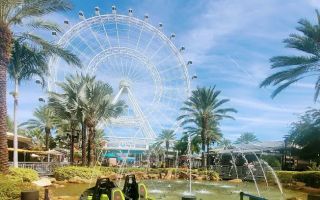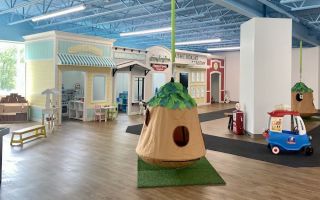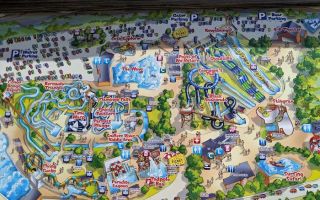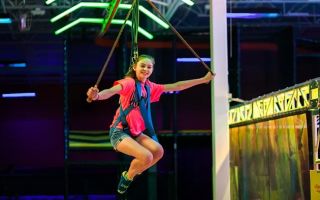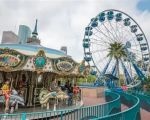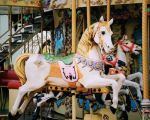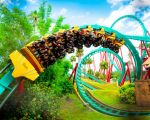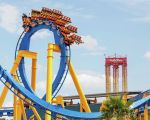What Happened to Joyland Amusement Park? The Story Behind Its Closure
- 1- Joyland Amusement Park: A Brief History
- 2- The Rise and Fall of Joyland Amusement Park
- 3- What Led to the Closure of Joyland?
- 4- The Impact of Joyland's Closure on the Community
- 5- The Lasting Legacy of Joyland Amusement Park
1- Joyland Amusement Park: A Brief History
Joyland Amusement Park was once the heart of family fun in Wichita, Kansas. Opening its doors in 1949, the park became a staple of American childhoods, offering thrilling rides, games, and entertainment for generations. With attractions like the famous Zingo roller coaster and a carousel that became iconic over the years, it quickly became a beloved landmark for locals and tourists alike.
For over 50 years, Joyland Amusement Park provided joy to families, making it a perfect spot for birthday parties, summer outings, and weekend fun. Its classic charm and nostalgic appeal turned it into a go-to destination for families throughout the 1970s and 1980s. For those who grew up visiting the park, it represented a magical place where memories were made, and thrills were experienced.
2- The Rise and Fall of Joyland Amusement Park
The park's heyday was in the 1970s and 1980s, but as time passed, Joyland's fortunes began to change. As new, larger theme parks with more modern amenities began to rise in the region, Joyland faced growing competition. However, it wasn’t just the external competition that led to its decline. The park struggled with maintenance issues, an aging infrastructure, and the increasing costs of running such a large entertainment venue.
By the late 1990s, the number of visitors dwindled, and the park's aging rides and facilities became harder to keep in working condition. Despite efforts to revamp and modernize, Joyland was simply unable to keep up with the changing landscape of amusement parks in the U.S.
3- What Led to the Closure of Joyland?
Several factors contributed to the closure of Joyland Amusement Park. One of the primary reasons was the rising costs of maintaining and upgrading the park’s rides and attractions. As the park's infrastructure aged, it required more frequent repairs, and keeping up with these expenses became a financial burden.
Additionally, Joyland struggled to compete with larger amusement parks that offered more modern attractions and entertainment. These parks not only had bigger and more exciting rides but also provided new experiences like themed areas, water parks, and live shows, which drew away visitors from smaller, older parks like Joyland.
In 2004, the park officially closed its doors. Despite several attempts to revitalize the park with new ownership, including efforts to bring in new rides and improve the facilities, it was clear that Joyland’s time had passed. The park’s closure marked the end of an era for Wichita and left behind a deep sense of nostalgia for those who had visited it during its peak years.
4- The Impact of Joyland's Closure on the Community
The closure of Joyland Amusement Park was not just a loss for thrill-seekers; it had a significant emotional impact on the local community. Many people who grew up in Wichita and surrounding areas had fond memories of visiting the park with their families. For them, Joyland was more than just an amusement park – it was a part of their childhood. The park's closure marked the end of a chapter in the lives of many, and it was felt deeply by residents who had fond memories of the iconic rides, events, and community spirit that the park fostered.
The economic impact was also notable. Joyland had provided jobs for many local residents, and its closure resulted in the loss of employment opportunities. Additionally, the park had been a popular tourist attraction, bringing visitors to Wichita who spent money in the local economy. Its closure left a hole in the city's tourism landscape that was difficult to fill.
5- The Lasting Legacy of Joyland Amusement Park
Despite its closure, the legacy of Joyland Amusement Park continues to live on in the memories of those who visited. The park’s history is preserved through photographs, stories, and memorabilia, with former visitors often reminiscing about their time there. Some of the park’s rides, like the Zingo roller coaster, have become symbols of Wichita’s past, reminding the community of the fun and joy that once filled the air.
Though Joyland no longer operates as an amusement park, its story has sparked local efforts to preserve its memory. Events are occasionally held to celebrate the park’s history, and some of its former rides and attractions have been preserved as historical landmarks. Today, the space that was once occupied by Joyland remains an important part of Wichita's identity, reminding residents of the simple pleasures of their childhood and the fun they had at the beloved amusement park.
If you're curious about more historical amusement parks and want to explore destinations that have their own fascinating stories, consider visiting parks and attractions that continue to celebrate the legacy of old-school entertainment. Check out 【Hickory Dickory Park】 for more information and the best ways to explore historical parks in your area.

